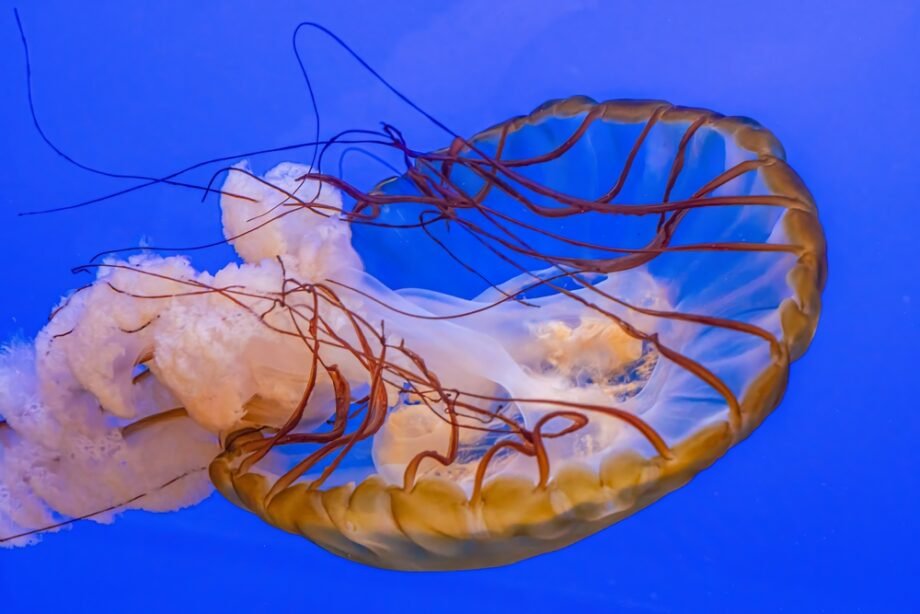Introduction to Sea Nettle Jellyfish
Sea nettle jellyfish are fascinating creatures that have captivated the interest of marine enthusiasts and hobbyists around the world. Known for their ethereal beauty and graceful movements, these jellyfish species have become popular choices for aquarium enthusiasts looking to add a touch of the ocean to their homes.
However, owning sea nettle jellyfish requires a deep understanding of their habitat, care needs, and behavior. In this comprehensive guide, we will explore the captivating world of sea nettle jellyfish, from their natural habitat to their unique care requirements.
Sea Nettle Jellyfish Species
Sea nettle jellyfish belong to the Chrysaora genus and are known for their striking appearance, characterized by their translucent bells and long, trailing tentacles. While there are several species within the Chrysaora genus, the most commonly kept as pets include Chrysaora fuscescens, also known as the Pacific sea nettle, and Chrysaora quinquecirrha, known as the Atlantic sea nettle.
Both species exhibit similar physical characteristics, with their bell-shaped bodies ranging in color from pale white to golden-brown, often adorned with intricate patterns and markings. Their tentacles, which trail behind them as they gracefully swim through the water, are equipped with stinging cells used for capturing prey and defending against potential threats.
It’s important to note that while sea nettle jellyfish are captivating to observe, they do possess stinging capabilities that can cause discomfort or mild irritation if proper precautions are not taken. As such, handling them requires caution and care to ensure both the safety of the jellyfish and the handler.
Sea Nettle Jellyfish Habitat
Understanding the natural habitat of sea nettle jellyfish is essential for creating a suitable environment in a home aquarium. In the wild, sea nettle jellyfish are found in coastal waters, often near estuaries and inlets where they can thrive in a mix of saltwater and freshwater environments. Their distribution spans across the Pacific and Atlantic Oceans, with varying populations in different regions.
When replicating their natural habitat in an aquarium setting, it’s crucial to maintain water conditions that closely mimic those found in their native environment. This includes monitoring and regulating water temperature, salinity levels, and overall water quality to ensure the health and well-being of the jellyfish.
Additionally, providing adequate space for sea nettle jellyfish to move and swim freely is essential. A spacious tank with gentle water flow and ample room for swimming allows these graceful creatures to exhibit their natural behaviors and thrive in a captive environment.
Sea Nettle Jellyfish Care
Proper care for sea nettle jellyfish involves a combination of attentive husbandry and a well-maintained aquarium setup. When considering the care requirements for these delicate creatures, several key factors must be taken into account.
First and foremost, maintaining water quality is paramount. Regular water testing and partial water changes are essential to prevent the buildup of harmful compounds and ensure a stable aquatic environment. Additionally, filtration systems specifically designed for jellyfish aquariums can help remove debris and maintain optimal water conditions.
Feeding sea nettle jellyfish also requires careful consideration. In the wild, they primarily feed on zooplankton and small fish, capturing their prey with the aid of their stinging tentacles. In a home aquarium, providing a suitable diet that mimics their natural feeding habits is crucial. Specialized jellyfish food, such as planktonic and brine shrimp, can be offered to meet their nutritional needs.
Furthermore, monitoring the overall health of sea nettle jellyfish is essential. Regular observation of their behavior, appearance, and feeding response can help identify any potential issues early on. Any signs of distress or changes in behavior should be addressed promptly to ensure the well-being of the jellyfish.
Sea Nettle Jellyfish Behaviour
Observing the behavior of sea nettle jellyfish can be a truly mesmerizing experience. Their graceful movements and pulsating bell-shaped bodies create a captivating display in an aquarium setting. Understanding their behavior is key to providing an enriching environment that supports their natural instincts and activities.
Sea nettle jellyfish are known for their rhythmic pulsing movements, which propel them through the water with an effortless elegance. Creating gentle water flow within the aquarium not only aids in their movement but also helps maintain a healthy aquatic environment by preventing stagnant water and promoting oxygenation.
Additionally, sea nettle jellyfish exhibit feeding behaviors that involve the use of their stinging tentacles to capture and consume prey. Providing appropriate feeding opportunities and observing their feeding response can offer valuable insights into their overall health and well-being.
It’s important to note that while sea nettle jellyfish are captivating to observe, they are best suited for experienced aquarium enthusiasts who are committed to providing the specialized care and attention they require. Their unique needs and delicate nature demand a dedicated approach to husbandry and an understanding of their behavior in a captive environment.
Conclusion
Sea nettle jellyfish are truly remarkable creatures that offer a glimpse into the mesmerizing world of marine life. From their captivating appearance to their graceful movements, these jellyfish species have captured the hearts of aquarium enthusiasts and nature lovers alike.
By gaining a deeper understanding of sea nettle jellyfish species, their natural habitat, care requirements, and behavior, enthusiasts can create an enriching and sustainable environment for these unique creatures. With careful attention to their needs and a commitment to responsible husbandry, sea nettle jellyfish can thrive in a well-maintained aquarium setting, providing endless fascination and beauty for those who appreciate the wonders of the ocean.

